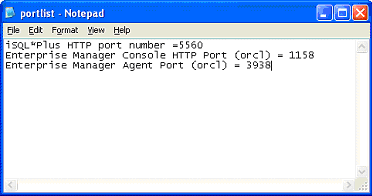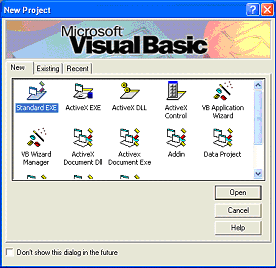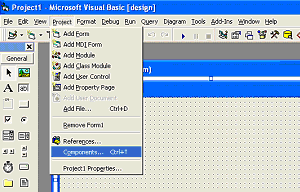1. Overview
of Buying from Amazon.com and Starbucks
o Order
o Pay
o Take
Delivery
Introduction
· This diagram is
an overview of our Database Schema which we will be going through in detail
before we review it at the end of this Tutorial.
· We will be
talking about a Database Schema covering Customers, Deliveries, Orders,
Products and Suppliers.
·
We will
start by looking at a Schema for Starbucks and then moving on to Amazon.
· Bear in mind
that the more complex solution includes the simpler one.
· Before we begin,
let me say that I have adopted the plural for Tables (such as 'Customers')
because it is more natural than the singular form.
· Strictly
speaking, Data Modellers would be using the singular for a Data Model of this
type, but I prefer a more User-Friendly approach.
· Data Modellers
would also refer to Entities, rather than Tables, for the 'Things of Interest'.
· You will notice
that I also refer to Tables for the same reason of being User-Friendly.
1. Enter
Starbucks
o Starbucks
offers Products
o Customers
can Order, for example, Coffee and Something to Eat
Our motto - Keep It Simple and
Straightforward (KISS)
We are starting in a simple way with this diagram
which shows two Entities without a Relationship.
The Relationship between them is established in
the next diagram, when the meaning of the 'PK' and 'FK' will be explained.
Products
I want to convey to you the value of seeing the
real world as a Database Schema.
It's always very interesting and adds a challenge
as you walk or drive around and
think about how you would create a Database Schema
for the real world that you can see around you.
· Let's say we go
into Starbucks to get a coffee and something to eat.
· At this point,
Starbucks doesn't know us as a Customer.
· Also we might be
doing the office coffee run, amd maybe we have with us our Order on a piece of
paper.
· These two
'Things of Interest', Products and Customer_Orders, are not related until we
give our Order.
· Data Modellers
commonly describe a Database Schema as an Entity-Relationship-Diagram, or ERD.
· The word
'Relationship' is therefore very important.
· However, at this
point, we haven't established a Relationship between the Products and the
Customer_Orders.
· We will do that
in the next slide.
1. Keys
o Primary
and Foreign Keys
2. Relationships
o One-to-Many
and Many-to-Many Relationships
I would like to start by defining some
basic conventions.
Primary Keys.
· These are
indicated by 'PK' alongside the field in a Table.
· They show the
field that identifies the record uniquely.
· For example, the
'product_id' for a Product and an 'order_id' for an Order.
· The values are
usually generated by an 'Auto-Increment' field.
· They don't have
any intrinsic meaning and are simply integers generated automatically one after
another.
Primary/Foreign Keys.
· These are
indicated by 'PF' alongside the field in a Table.
· In this case,
the field also exists as a Primary Key in another Table.
· In our example,
the Primary Key in the 'Customer_Orders_Products' Table is a Composite Key,
made up of two Fields.
· The 'product_id'
is the Primary Key in the 'Products' Table, and the 'order_id' is the Primary
Key in the 'Customer_Orders' Table.
Foreign Keys.
· These are
indicated by 'FK' alongside the field in a Table.
· They show a
reference to the Primary Key for a record in another Table.
· For example, the
'customer_id' in the Customer_Orders Table is linked to a 'customer_id' in the
Customer Table (not shown).
One-to-Many Relationships.
· One-to-Many
Relationships are very common in the real world, and can be read that 'One'
Parent can have 'Many' children.
· In this diagram,
One Product can be associated with Many Customer_Orders_Products.
· The line between
Products and Customer_Orders_Products is a continuous line (not a dotted line).
· This means that
the 'product_id' field is a Primary Key in the Customer_Orders_Products Table.
· A dotted line
would indicate the existence of a Foreign Key (which is defined above).
'Crows-Feet'
· At the
Customer_Orders_Products end, there is what's called a 'Crows-Feet' symbol.
· This indicates
the 'Many' aspect of the relationship.
· The little 'o'
shows that this is an Optional relationship.
· In other words,
not every Product has an associated record in the Customer_Orders_Products
Table.
· This applies, of
course, to Products that nobody orders.
· At the other end
of the line there is a small horizontal line. This means that this is
essential.
· In other words,
every product_id in the Customer_Orders_Products Table must match a product_id
in the products Table.
· This means that
a Customer cannot order a Product that does not exist.
· In passing, let
me say that this is different from the Product not being in stock.
· This aspect is
called Inventory Control and is covered by a different Database Schema.
· The Relationship
between Customer_Orders and Customer_Orders_Products shows a short horizontal
line at each end.
· This indicates
that every Order must contain at least one Product.
· It also
indicates that Product in every Customer_Orders_Products must be associated
with an Order in Customer_Orders.
Many-to-Many Relationships.
· Many-to-Many
Relationships are very important in the real world, and we see them all around
us every day.
· In our example,
many Customers can order the same Product.
· Many Products
can be ordered by the same Customer.
· This is called a
Many-to-Many Relationship. It cannot be implemented directly in a Table in a
Relational Database.
· The solution is
to create an intermediate table that records all combinations that exist of
Customer and Product.
· For example, if
a Customer ordered three Products, then there would be three records for that
Customer in this intermediate table.
· The combination
of the Primary keys in the parent Tables become the Primary key in this
intermediate table.
· We also need to
allow for Comments like 'Make it extra strong, please'.
· If we get the
structure to the Database right, then it's straightforward to extend it.
1. Pay
the Bill
o Enter
Starbucks
o Order
Coffee and Something to Eat
o Finally
Pay for it.
Payments
· Of course, we
have to pay for what we have ordered before we get to consume it.
· Fortunately,
paying in Starbucks is quite straightforward.
· In passing,
let's note that the total price we have to pay is derived from the total cost
of the individual items.
Customer Payment Methods
· These will
usually be Cash or Credit Card, and are shown in more detail in the next
diagram.
· Payments are
simpler at Starbucks than Amazon.com, but our design is general and covers
both.
Derived Data
· The total price
we have to pay is derived from the total cost of the individual items.
· In a
'Normalised' Database Schema, we do not normally show derived fields, such as
total figures.
· This allows us
to drill-down to the basic fundamental data.
· We want to get
to the point where we can't remove anything without losing meaning or value.
· For this reason,
I have shown the total price as a 'Derived' field, and called it
'der_order_price'.
· One of the
strengths of the Relational Database is that it strips away everything which is
not fundamental.
Reference Data
· Reference data
is important, because it occurs in virtually every Database Schema in the real
world.
Status
· The status of an
order in Starbucks usually changes so quickly that we don't need to keep track
of it.
· It is shown here
to anticipate its use for Amazon.com, which is more complex, as we will see
later.
· The Status can
be part of the Customer_Orders table, and take values from the
'Ref_Order_Status_Codes' table.
1. Customers
at Amazon.com
o Customers
o Addresses
o Payment
Methods
Addresses, Payments and Many-To-Many
Relationships
· Customers and
Addresses
· At Starbucks, we
give very little information about ourselves as Customers.
· If we pay by
cash, we give no details at all.
· Amazon.com, on
the other hand, needs to know a good deal more about us.
· For example,
they need to store details about our addresses, and we can have many of these.
· In our Database
Schema,we could have a Billing Address, a Residence Address and more than one
Delivery Address.
· In passing, let
me say that the existence of a separate Addresses Table is often a
distinguishing characteristic between a Database Schema with
limited scope,and one intended for use in a
mission-critical capacity.
· Therefore we
store Addresses in a separate Table, instead of repeating Address details many
times in Customer Tables.
· This has many
benefits. It allows us to validate the Address against files of recognised
Addresses.
· This has become
a standard approach so that many commercial products are available to help in
this validation.
· In addition,
maintaining a separate Address Table helps in tracking changes of Customer
Addresses.
· The Primary Key
in the Customer_Addresses table is the combination of the Customer ID, the
Address ID,
and the Date when the Customer moved in.
This works because the Customer cannot move in to
the same Address more than once on the same Date.
Of course, they could move out and back in on
another date, and our design covers that situation.
· Many-To-Many
Relationships
· And, of course,
as we saw before, this is an example where a Many-to-Many relationship is
found.
· A Customer can
have many Addresses, and many Customers can live at the same Address.
· We resolve this
many-to-many by an intermediate table, shown in the diagram as
'Customer_Addresses'.
· In a similar
way, there is a many-to-many relationship between Customers and Payment
Methods.
· A Customer can
have many Payment Methods, such as different Credit Cards, as well as Cash and
Check.
· And, of course,
the same Payment Method can be used by many Customers.
· We resolve the
many-to-many Customer Payment Relationship with an intermediate table,
which is called 'Customer_Payment_Methods' in the
diagram.
Customer Payment Methods
· There is a
number of Payment Methods, which are stored as Reference Data,
· These will
usually be Cash (at Starbucks) or Credit Card (at Amazon.com).
· The
Customers_Payment_Methods Table can store Credit Card details.
· Standards for
Reference Data
· Where we use
Reference Data, it is good practice to comply with relevant national or
international Standards.
· For example, in
the Addresses Table, we can see a field called 'iso_country_code'.
· The ISO prefix
emphasises the fact that we have adopted conventions endorsed by the
International Standards Organisation,('ISO').
· Then, if we want
to use our Database Schema on an international scale, our approach will be
'future proof'.
1. Products
at Amazon.com or Starbucks
o Coffee
o Books
o Product
Types (Inheritance and Recursion).
Products
Let's move on to the topic of Products. As you
might imagine, this can be a complex area.
Two important aspects are Inheritance and Product
Hierarchies.
Inheritance
· This diagram
shows a 'Products' table that holds details that are common to all Products.
· It shows an
'Amazon_Books' table that holds details that are specific to Books from Amazon.
· It also shows a
'Starbucks_Products' table that holds details that are specific to Products from
Starbucks.
· These two are
Children of the Parent 'Products' Table.
· Therefore, this
concept is referred to as Inheritance and is very powerful in the real world.
· On the diagram,
it is shown by the circle with two short horizontal lines underneath it.
· Data Modellers
define these as 'Sub-Types' of a 'Super-Type'.
· This diagram
shows the Logical level of the Schema.
· At the physical
level, this can be implemented in one of three ways :-
1.
Three tables - exactly like the
Logical level.
2. Two
tables - one for Amazon and one for Starbucks, with the common data items
copied down from the Parent Table.
3. One
table - at the higher level, with common data items and those for Amazon and
Starbucks all in one large table.
Recursive Product Hierarchy
· The line that
comes out of the Ref_Product_Types Table and then goes back in again is
informally called a 'Rabbits Ear',
or more formally a 'Recursive Relationship'. It
defines a Product Hierarchy.
· It means that
any Product can be part of a higher grouping of Products, such as Categories,
Types and so on.
· This is a very
neat and powerful way to implement this concept.
· In our example,
the 'parent_product_type_code' is a reference to the next highest level in the
hierarchy.
Suppliers
· I introduce
Suppliers at this point because Starbucks and Amazon.com are both Suppliers of
Products within our Schema.
· This would be
the starting-point for Schema involving a more detailed analysis of Suppliers.
1. Deliveries
from Amazon.com
Deliveries go thru a series of progressive stages, such as (alphabetically) :-
o Cleared
Customs
o Delivered
o Left
Warehouse
Deliveries
· Deliveries is a
straightforword area to model.
· We have added
just two Tables.
· The
'Customers_Orders_Delivery' Table keeps a history of the Stages in the delivery
of the Order.
· The
'Ref_Delivery_Status_Codes' tells us what those Stages can be, and they can be
displayed in a Drop-down list in an Application.
· As you can see,
a series of records will be stored in the 'Customers_Orders_Delivery' Table.
· Each record has
a different date and time and a different Stage.
· This Table makes
it possible to track the Order to final Delivery.
1. Buying
from Amazon.com and Starbucks
o Order
o Pay
o Take
Delivery
Summary
· Here we are,
back where we started.
· We are looking
at an overview Schema, which shows only the names of the Tables and the
relationships.
· It's very useful
when you want to discuss the Schema with the users, developers or managers.
· It shows that
Products have Suppliers, and can be ordered by Customers and delivered to
Addresses.
· In this
Tutorial, we have looked at the design of a typical Database Schema.
· I hope that next
time you look at a Schema you should be comfortable understanding it and using
it.
· I hope I have been
able to explain some of the theory behind this Database Schema.
· In particular, I hope that you will be more comfortable the next time you see one.
Business Rules
Let me close by discussing the important topic of Business Rules which must underly any Schema you look at.
These are often implemented as 'Constraints' in the Database.
These Business Rules are important because they define the conditions that the Database must meet.
· For example, every Order must be associated with a valid Product.
· This prevents invalid Orders being entered into the Database.
· These Rules can be understood by both the Users and the Database designer.
· When you extend a Database Schema, it is always valuable to keep these Rules up-to-date.
· This is not always done meticulously but is necessary where Users will 'sign-off' on their requirements.
A. SCOPE OF THE DATABASE SCHEMA :
A.1 The Scope is buying products from Amazon.com and Starbucks.
B. THE THINGS OF INTEREST include :-
B.1 Addresses.
B.2 Customers.
B.3 Deliveries
B.4 Orders.
B.5 Payments
B.6 Products.
B.7 Suppliers.
C. These THINGS are Related as follows :-
C.1 A Customer can have zero,one or many ORDERS.
C.2 A CUSTOMER_ADDRESS can be associated with only one ADDRESS.
C.3 A CUSTOMER_ADDRESS can be associated with only one CUSTOMER.
C.4 A DELIVERY is associated with just one ORDER.
C.5 An ORDER must be associated with one and only one CUSTOMER.
In different applications in the real world, it is possble that an ORDER can
be associated with more than one CUSTOMER,but in our example, it's only one.
C.6 An ORDER can be associated with one or many PRODUCTS.
C.7 A PAYMENT must be associated with one and only one ORDER.
D. Other Characteristics of these THINGS include :-
D.1 A BOOK can have one and only one ISBN.
D.2 A FRAPPUCCINO can have a Flavor.
D.3 A PANINI can have Ingredients.



